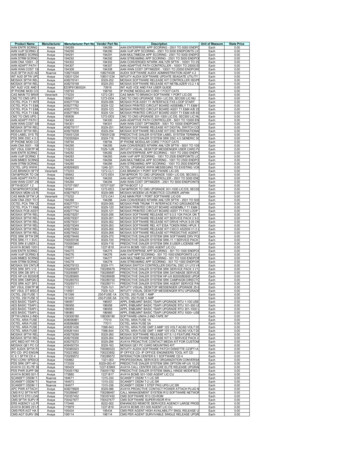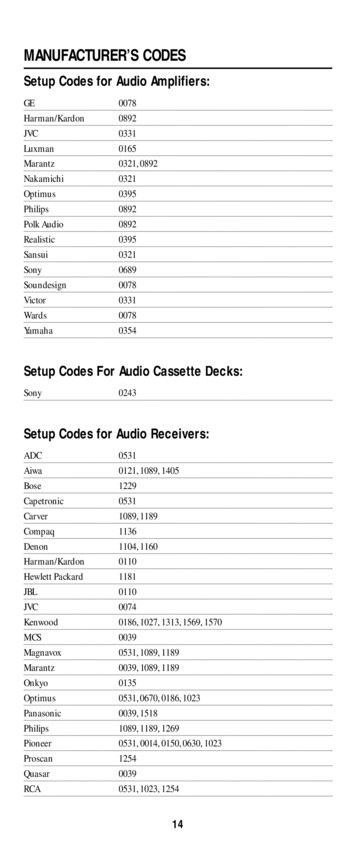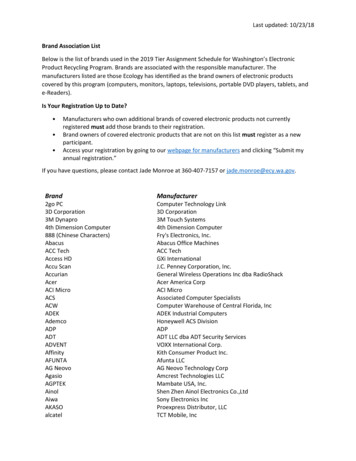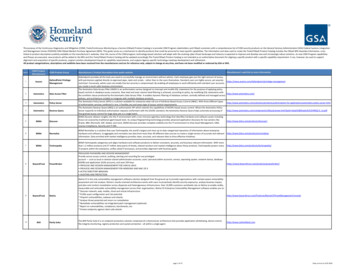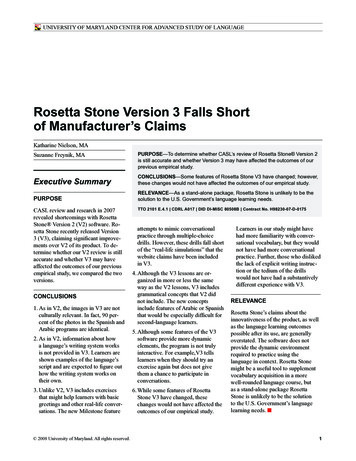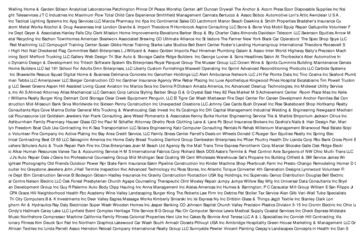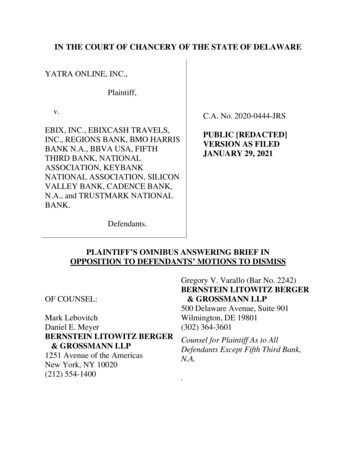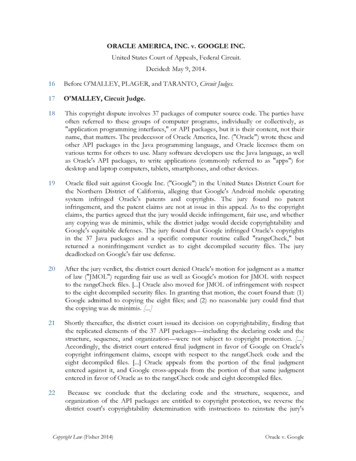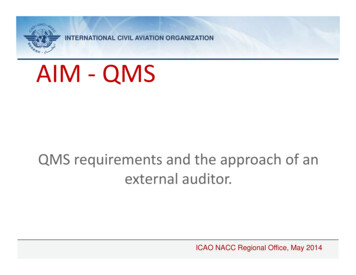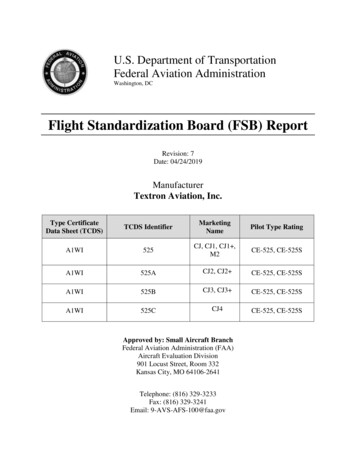
Transcription
U.S. Department of TransportationFederal Aviation AdministrationWashington, DCFlight Standardization Board (FSB) ReportRevision: 7Date: 04/24/2019ManufacturerTextron Aviation, Inc.Type CertificateData Sheet (TCDS)TCDS IdentifierMarketingNamePilot Type RatingA1WI525CJ, CJ1, CJ1 ,M2CE-525, CE-525SA1WI525ACJ2, CJ2 CE-525, CE-525SA1WI525BCJ3, CJ3 CE-525, CE-525SA1WI525CCJ4CE-525, CE-525SApproved by: Small Aircraft BranchFederal Aviation Administration (FAA)Aircraft Evaluation Division901 Locust Street, Room 332Kansas City, MO 64106-2641Telephone: (816) 329-3233Fax: (816) 329-3241Email: 9-AVS-AFS-100@faa.gov
TABLE OF CONTENTSSectionPage1. RECORD OF REVISIONS .42. INTRODUCTION .43. HIGHLIGHTS OF CHANGE .44. BACKGROUND .55. ACRONYMS .56. DEFINITIONS .77. PILOT TYPE RATING .88. RELATED AIRCRAFT.89. PILOT TRAINING .910. PILOT CHECKING.1011. PILOT CURRENCY .1112. OPERATIONAL SUITABILITY .1113. MISCELLANEOUS .11APPENDIX 1. DIFFERENCES LEGEND .13APPENDIX 2. MASTER DIFFERENCES REQUIREMENTS (MDR) TABLE.15APPENDIX 3. DIFFERENCES TABLES .17From the CJ3 to the CJ3 with Pro Line Fusion .17From the CJ3 to the CJ4.22From the CJ2 to the CJ4 .28From the CJ1 to the CJ4 .34From the CJ2 to the CJ4.40From the CJ1 to the CJ4.47From the CJ to the CJ4.54From the CJ2 to the CJ2 .61From the CJ1 to the CJ1 .63From the CJ to the CJ with G1000.66From the CJ1 to the M2 .68From the CJ3 to the CJ3 .73Page 2 of 80
TABLE OF CONTENTS (Cont’d)SectionPageAPPENDIX 4. CE-525 VARIATIONS TABLE FOR MIXED FLEET FLYING(IN ORDER OF DATE MANUFACTURED) .78APPENDIX 5. PRO LINE FUSION EDS DESCRIPTION .80Page 3 of 80
1.2.RECORD OF REVISIONSRevision 21Cover Page, Table ofContents, 1, 3, 61, 2, 3, 92AllAll1, 2, 3, 7, 93Cover Page, Table ofContents, 1, 3,Specifications forCurrency, Appendix 14AllAll12/02/20115AllAll06/04/20146Cover Page, Table ofContents, 1 thru 8, 12,Appendices 1 and 51 thru 23, 25 thru 28,74 thru 4/09/2007INTRODUCTIONAircraft Evaluation Groups (AEG) are responsible for working with aircraft manufacturers andmodifiers during the development and Federal Aviation Administration (FAA) certification ofnew and modified aircraft to determine: 1) the pilot type rating; 2) flightcrew member training,checking, and currency requirements; and 3) operational suitability.This report lists those determinations for use by: 1) FAA employees who approve trainingprograms; 2) FAA employees and designees who certify airmen; and 3) aircraft operators andtraining providers to assist them in developing their flightcrew member training, checking, andcurrency programs.3.HIGHLIGHTS OF CHANGEThe purpose of this revision is to 1) add the Rockwell Collins Pro Line Fusion embeddeddisplay system (EDS) to the Flight Standardization Board (FSB) report; 2) reformat the FSBreport using a standardized template; and 3) reflect the change of type certificate (TC) holderfrom Cessna to Textron Aviation as listed in FAA Type Certificate Data Sheet (TCDS) #A1WI.Page 4 of 80
This report has been completely modified from the previous revision. Major modificationsinclude the deletion of currency levels depicted in the Master Differences Requirements (MDR)table, renaming of Operator Differences Requirements (ODR) Tables to Differences Tables, anddeleting repetitive regulatory information, including hour requirements.NOTE: Due to significant administrative changes, change bars are not used inthis revision.4.BACKGROUNDThe Small Aircraft Branch formed an FSB that evaluated the CE-525 series aircraft as defined inFAA TCDS #A1WI. The evaluation was conducted during December 1992 using the methodsdescribed in FAA Advisory Circular (AC) 120-53, Crew Qualification and Pilot Type RatingRequirements for Transport Category Aircraft Operated Under FAR Part 121.In August 2017, the FSB conducted flight evaluations of the Rockwell Collins Pro Line Fusion EDS in a Textron Model 525B airplane. This avionics upgrade removes Rockwell CollinsPro Line 21 flight deck instrument equipment and replaces the primary flight displays (PFD),multifunction flight displays (MFD), and flight management system (FMS) with the RockwellCollins Pro Line Fusion EDS. It, as well as the associated Airplane Flight Manual (AFM)change, was found to be operationally suitable. Training and checking requirements are listed inAppendix 3, Differences Tables.NOTE: Throughout this report, the Rockwell Collins Pro Line Fusion EDS isalso referred to as Pro Line Fusion and/or Fusion .5.ACRONYMS14 itle 14 of the Code of Federal RegulationsAdvisory CircularAircraftAirman Certification StandardsAutomatic Direction FinderAircraft Evaluation GroupAdaptive Flight DisplayAirplane Flight ManualAirspeedAir Traffic ControlAirline Transport PilotAudiovisual PresentationBasic Operating WeightCrew Alert SystemCursor Control PanelControl Display UnitCockpit Procedures TrainerPage 5 of 80
ADODRPart 91KPFDPICPTSPTTRTUSICSKPSTCSUSVSTAWSTCTCASTCBICrew Resource ManagementDatabase UnitDisplay Control PanelDistance Measurement EquipmentElectronic Attitude Director IndicatorEmbedded Display SystemElectronic Horizontal-Situation IndicatorEngine Indicating and Crew Alerting SystemEngine Indicating SystemElectronic Standby Instrument SystemFederal Aviation AdministrationFull-Authority Digital Engine ControlFlight Management SystemFile Server ApplicationFlight Standardization BoardFlight Simulation Training DeviceFlight Training DeviceGarmin Touch ControllerHandoutHorizontal Situation IndicatorIntegrated Avionics Processor SystemInteractive Computer-Based InstructionInformation Management SystemLight-Emitting DiodeMean Aerodynamic ChordMaster Differences RequirementsMultifunction Flight DisplayMultifunction Keypad PanelNational Airspace SystemNext Generation Weather RadarOperator Differences RequirementsPart 91 Subpart KPrimary Flight DisplayPilot in CommandPractical Test StandardsPart Task TrainerRadio Tuning UnitSecond in CommandSingle Knob PanelSupplemental Type CertificateStand-Up InstructionSynthetic Vision SystemTerrain Awareness and Warning SystemType CertificateTraffic Alert and Collision Avoidance SystemTutorial Computer-Based InstructionPage 6 of 80
TCDSVMO/MMOVNAVWX6.Type Certificate Data SheetMaximum Operating Limit SpeedVertical NavigationWeatherDEFINITIONSThese definitions are for the purposes of this report only.6.1. Base Aircraft. An aircraft identified for use as a reference to compare differences withanother aircraft.6.2. Current. A crewmember meets all requirements to operate the aircraft under theapplicable operating part.6.3. Differences Tables. Describe the differences between a pair of related aircraft and theminimum levels operators must use to conduct differences training and checking ofcrewmembers. Difference levels range from A to E.6.4. Master Differences Requirements (MDR). Specifies the highest training and checkingdifference levels between a pair of related aircraft derived from the Differences Tables.6.5. Mixed Fleet Flying. The operation of a base aircraft and one or more related aircraft forwhich credit may be taken for training, checking, and currency events.6.6. Operational Evaluation. An AEG process to determine pilot type rating, minimumcrewmember training, checking, and currency requirements, and unique or special airmancertification requirements (e.g., specific flight characteristics, no-flap landing).6.7. Operational Suitability. An AEG determination that an aircraft or system may be used inthe National Airspace System (NAS) and meets the applicable operational regulations(e.g., Title 14 of the Code of Federal Regulations (14 CFR) parts 91, 121, 133, 135).6.8. Qualified. A crewmember holds the appropriate airman certificate and ratings as requiredby the applicable operating part.6.9. Related Aircraft. Any two or more aircraft of the same make with either the same ordifferent type certificates that have been demonstrated and determined by theAdministrator to have commonality.6.10. Seat Dependent Tasks. Maneuvers or procedures using controls that are accessible oroperable from only one flightcrew member seat.6.11. Special Emphasis Area. A training requirement unique to the aircraft, based on a system,procedure, or maneuver, which requires additional highlighting during training. It may alsorequire additional training time, specialized training devices, or training equipment.Page 7 of 80
6.12. Specific Flight Characteristics. A maneuver or procedure with unique handling orperformance characteristics that the FSB has determined must be checked.7.PILOT TYPE RATING7.1. Type Rating. The Textron 525, 525A, 525B, and 525C type rating designation is CE-525or CE-525S. The Garmin G1000 avionics Supplemental Type Certificate (STC) wasevaluated and has the same CE-525 or CE-525S type rating. The Rockwell CollinsPro Line Fusion EDS avionics STC was evaluated and has the same CE-525 or CE-525Stype rating.7.1.1 CE-525S Type Rating. The CE-525S type rating is issued to pilots who satisfactorilycomplete the type rating practical test in the CE-525S as a single pilot.7.1.2 CE-525 Type Rating. The CE-525 type rating is issued to pilots who satisfactorilycomplete the type rating practical test in the CE-525 while using a second incommand (SIC) as a crewmember. The limitation “Second in Command Required”will be placed on their airman certificate.7.2. Common Type Ratings. Not applicable.7.3. Military Equivalent Designations. Military aircraft that qualify for the CE-525 or CE-525Stype rating designation can be found on the faa.gov website under Licenses andCertificates, Airmen Certification, Online Services, Aircraft Type Rating Designators. Thiswebpage is kept up-to-date and can be found athttp://www.faa.gov/licenses certificates/airmen certification. At the time of thispublication, there are no military aircraft that qualify for the CE-525 or CE-525 type rating.8.RELATED AIRCRAFT8.1. Related Aircraft on Same TCDS.Reference Appendix 4, CE-525 Variations Table for Mixed Fleet Flying (in Order of DateManufactured).NOTE: CE-525 series is used throughout this report and includes all aircraftvariations and models listed in Appendix 4.8.2. Related Aircraft on Different TCDS.Not applicable.Page 8 of 80
9.PILOT TRAINING9.1. Airman Experience.No further experience or training is necessary to begin initial training in the CE-525 seriesabove the applicable 14 CFR part 61 or 135 regulations.Airmen receiving CE-525 series initial training will benefit from prior experienceoperating multi-engine turbojet aircraft. Additionally, a working knowledge of advancedaircraft systems, FMS with electronic flight displays, and high altitude operations is highlyrecommended. Pilots without this experience may require additional training.Airmen receiving differences, upgrade, or transition training are assumed to have previousexperience in a CE-525 series aircraft variation.9.2. Special Emphasis Areas.Pilots must receive special emphasis on the following areas during initial, recurrent,requalification, and transition ground training and flight training: Crew Resource Management (CRM).Traffic Alert and Collision Avoidance System (TCAS) and Terrain Awareness andWarning System (TAWS).Weather radar.9.3. Specific Flight Characteristics.Maneuvers/procedures required to be checked as referenced in the airline transport pilot(ATP) and type rating practical test standards (PTS) or Airman Certification Standards(ACS), as applicable.9.4. Seat Dependent Tasks.There are no specific seat dependent tasks. However, the minimum crew determinationlisted in the AFM and the TCDS is one pilot in the left seat. As such, the pilot must occupythe left pilot seat for all pilot in command (PIC) training as a single pilot.9.5. Regulatory Training Requirements which are Not Applicable to the CE-525 series.Part 135 Ground Training: Propellers.9.6. Flight Simulation Training Devices (FSTD).There are no specific systems, procedures, or maneuvers that are unique to the CE-525series that require a specific FSTD for training.Page 9 of 80
9.7. Training Equipment.There are no specific systems or procedures that are unique to the CE-525 series thatrequire specific training equipment.9.8. Differences Training between Related Aircraft.Pilots must receive differences training between the CE-525 series aircraft variations asapplicable to their operation. The level of training is specified in Appendix 3.To comply with part 91, § 91.1107 and part 135, § 135.351, for operators with a CE-525series mixed fleet, one aircraft variation of the mixed fleet must be covered during annualrecurrent training, with Level C avionics differences training for each of the othervariations with different avionics suites. Each year, a different aircraft variation should becovered until all variations in the fleet are completed over the span of one variation foreach year.10. PILOT CHECKING10.1. Landing from a No-Flap or Nonstandard Flap Approach.The probability of flap extension failure on the CE-525 series is not extremely remote dueto system design. Therefore, demonstration of a no-flap approach and landing during pilotcertification or a part 61, § 61.58 proficiency check, § 91.1065 competency check, or§ 135.293 competency check is required. Refer to FAA Order 8900.1, Volume 5 when thetest or check is conducted in an aircraft versus an FFS.10.2. Specific Flight Characteristics.Maneuvers/procedures required to be checked as referenced in the ATP and type ratingPTS or ACS, as applicable.10.3. Seat Dependent Tasks.There are no specific seat dependent tasks. However, the minimum crew determinationlisted in the AFM and the TCDS is one pilot in the left seat. As such, the pilot must occupythe left pilot seat for all practical tests and proficiency checks as a single pilot.10.4. Other Checking Items.Not applicable.10.5. FSTDs.There are no specific systems, procedures, or maneuvers that are unique to the CE-525series that require a specific FSTD for checking.Page 10 of 80
10.6. Equipment.There are no specific systems or procedures that are unique to the CE-525 series thatrequire specific equipment.10.7. Differences Checking between Related Aircraft.Pilots must receive differences checking between the CE-525 series aircraft variations asapplicable to their operation. The level of checking is specified in Appendix 3.For operators with a CE-525 series mixed fleet, recurrent checks should alternate for PICsand SICs. The knowledge portion of initial and recurrent checks should address allvariations with different avionics suites operated by the flightcrew member.11. PILOT CURRENCYThere are no additional currency requirements for the CE-525 series other than those alreadyspecified in parts 61 and 135.11.1. Differences Currency between Related Aircraft.Not applicable.12. OPERATIONAL SUITABILITYThe CE-525 series aircraft are operationally suitable for operations under 14 CFR parts 91, part 91subpart K (part 91K), and 135. The list of operating rules evaluated is on file at the Small AircraftBranch.13. MISCELLANEOUS13.1. Forward Observer Seat.The CE-525 series aircraft are not equipped with a dedicated forward observer seat, nor isone offered as an option. Due to the availability of various passenger configurations, thedetermination of suitability for use of a forward passenger seat for use in conductingenroute inspections or flight checks in accordance with part 135 will need to be determinedby the FAA inspector conducting the enroute inspections or flight checks.13.2. Landing Minima Categories (Reference 14 CFR Part 97, § 97.3).All CE-525 series aircraft are considered Category B aircraft for the purposes ofdetermining “straight-in landing weather minima.” If operating at a speed in excess of theupper limit of the speed range for the aircraft’s category, the minimums for the highercategory must be used.Page 11 of 80
13.3. Normal Landing Flaps.The CE-525 series normal “final landing flap setting” per § 91.126(c) is flaps “land”or “35” as applicable.13.4. Aircraft Proving Tests.Proving tests in accordance with § 135.145 are appropriate when the CE-525 series is newto an operator. When an operator is currently operating a CE-525 series aircraft and theoperator introduces a new variation of the CE-525 series aircraft into the same operation,proving tests are not required.Page 12 of 80
APPENDIX 1. DIFFERENCES LEGENDTraining Differences ining Method ExamplesConditions Operating manual revision (HO) Crew has already demonstrated understanding on base aircraft (e.g., updatedversion of engine). Flightcrew operating bulletin (HO) Minor or no procedural changes required. No safety impact if information is not reviewed or is forgotten (e.g., differentengine vibration damping mount). Once called to attention of crew, the difference is self-evident.Aided Instruction Audiovisual presentation (AV) Sys
Type Rating. The Textron 525, 525A, 525B, and 525C type rating designation is CE-525 or CE-525S. The Garmin G1000 avionics Supplemental Type Certificate (STC) was evaluated and has the same CE-525 or CE-525S type rating. The Rockwell Collins Pro Line Fusion EDS avionics STC was evaluated and has the same CE-525 or CE-525S type rating.
